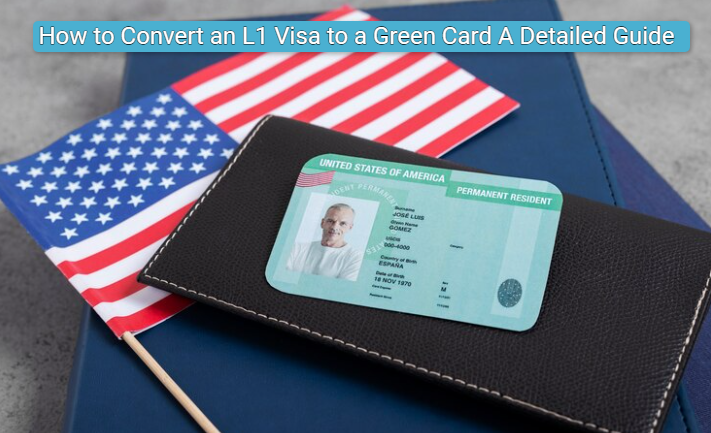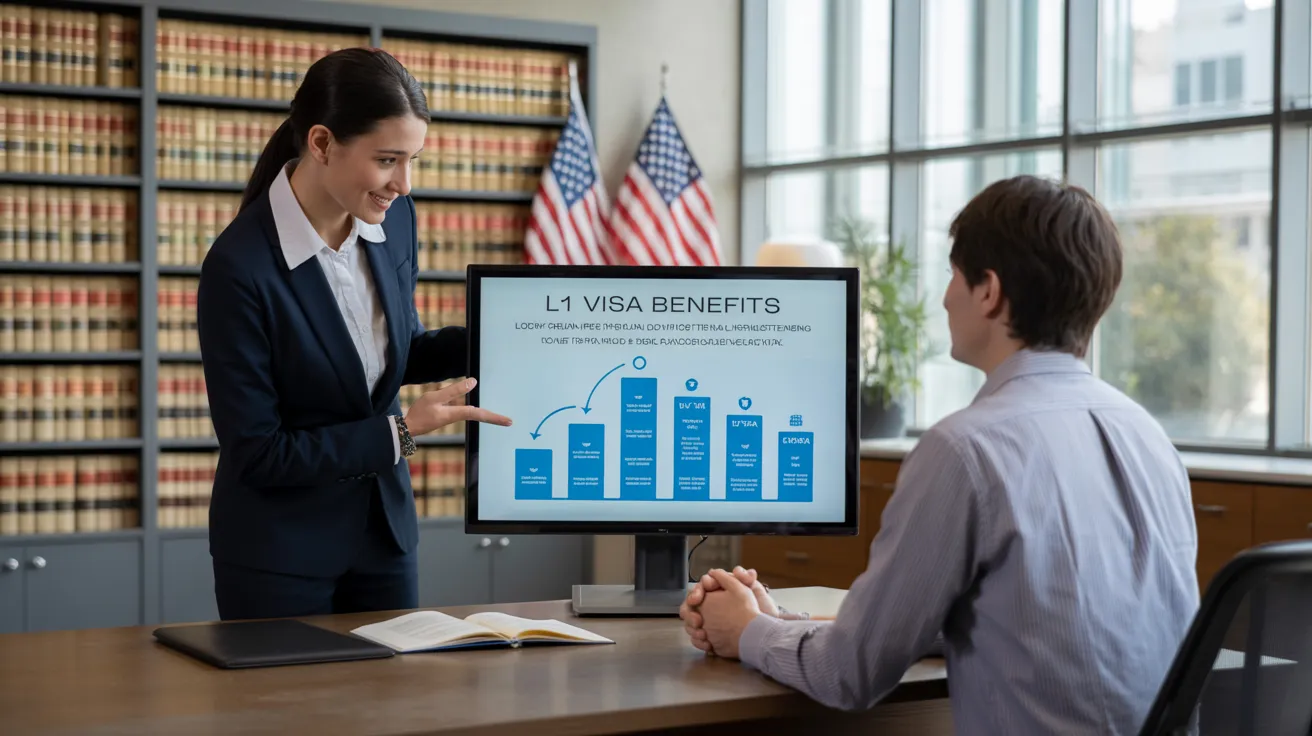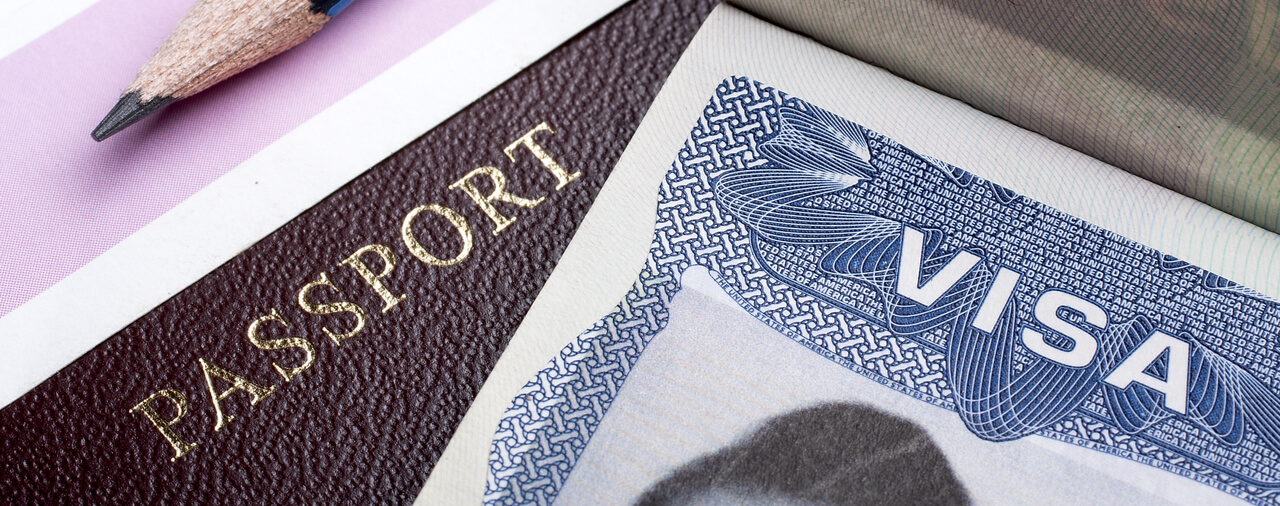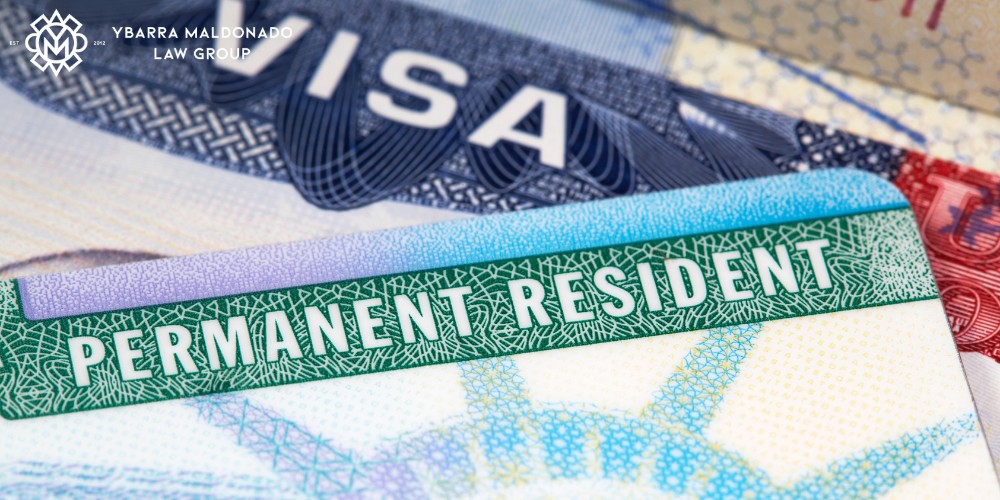Unlocking Opportunities: A Comprehensive Guide to the L1 Visa Process
The L1 visa process provides an important pathway for international companies looking for to transfer essential workers across borders. Comprehending the subtleties of eligibility standards, the distinctions in between L-1A and L-1B visas, and the ins and outs of the application process can significantly affect a candidate's success. Navigating this facility landscape is not without its difficulties, and cautious interest to documents and company sponsorship is necessary. As we discover the vital parts of this process, the methods for getting over prospective challenges will certainly end up being evident, exposing exactly how notified prep work can open a globe of possibilities.
Recognizing the L1 Visa
Understanding the L1 visa entails identifying its significance as a crucial tool for international firms seeking to move skilled employees between global workplaces. This non-immigrant visa group facilitates the motion of executives, supervisors, and specialized knowledge employees to the United States, consequently enabling companies to preserve functional connection and harness international ability efficiently. The L1 visa is separated right into two primary classifications: L-1A for managers and executives, and L-1B for employees possessing specialized knowledge.The L1 visa serves a vital function in boosting a firm's competitive edge in the international market - L1 Visa Requirements. By allowing business to relocate their essential personnel, organizations can guarantee that crucial tasks are taken care of by qualified individuals who are currently knowledgeable about the business's culture and functional procedures. This interior transfer system not only fosters understanding sharing yet likewise advertises innovation and collaboration across borders.Moreover, the L1 visa is frequently preferred for its reasonably uncomplicated application process contrasted to various other visa groups, as it enables dual intent, allowing holders to go after irreversible residency while on a short-term job visa. This feature makes the L1 visa specifically appealing for both companies and employees, as it enhances the path for skilled professionals to develop long-lasting residency in the USA
Qualification Requirements
Qualification for the L1 visa depends upon a number of vital standards that assure both the employee and the company meet certain credentials. This non-immigrant visa is developed for international firms to transfer staff members from international offices to U.S. counterparts.Firstly, the company should be a qualifying organization, which consists of a parent company, branch, affiliate, or subsidiary of a united state service. The company needs to have been doing service for at least one year both in the U.S. and abroad. This guarantees that the business has sufficient operational security and a legitimate presence.Secondly, the staff member must hold a managerial, exec, or specialized understanding position. For L1A visas, the applicant has to demonstrate supervisory or executive qualifications, while L1B visas concentrate on specialized understanding relevant to the company's products, solutions, or processes. Additionally, the staff member has to have benefited the foreign entity for at least one constant year within the last 3 years prior to their application.Lastly, the employee's role in the U.S. must straighten with their previous position, ensuring that their abilities and experience are leveraged for the firm's advantage.
Types of L1 Visas
The L1 visa category consists of 2 key types created to help with the transfer of employees within international business: the L1A visa for managers and executives, and the L1B visa for staff members with specialized understanding. Each kind offers distinctive functions and has particular qualification criteria.The L1A visa is customized for people who hold managerial or executive placements within a company. This visa allows top-level employees to move to an U.S. branch, subsidiary, or associate of the exact same organization. Candidates for the L1A visa must show that they have been used in a supervisory or executive capability for at the very least one continuous year within the previous three years prior to their application. Additionally, this visa uses a longer period of remain, initially given for three years, with the possibility of expansions for approximately 7 years.In contrast, the L1B visa is planned for specialists with specialized expertise related to the firm's items, services, or procedures. To qualify, applicants need to prove that their competence is essential to the organization which they have actually functioned for a minimum of one continuous year within the last 3 years in a function that required this specialized understanding. The L1B visa is at first approved for three years, with extensions available for approximately five years.Both visa types are crucial for business looking for to boost their worldwide procedures by leveraging experienced employees, thus promoting development and performance within the U.S. market.
Application Process
Guiding with the L1 copyright procedure involves numerous vital steps that have to be carefully followed to assure an effective result. The process begins with the U.S. company, that must initially develop qualification by showing a qualifying partnership with the international entity and confirming that the worker fulfills the specific requirements for the L1 visa classification being sought.Once eligibility is validated, the company starts the procedure by submitting Kind I-129, the Application for a Nonimmigrant Employee, with the United State Citizenship and Migration Solutions (USCIS) This type needs to be accompanied by a comprehensive summary of the work responsibilities to be executed, the business structure of both the U.S. and international entities, and the employee's credentials. It's important to confirm that all details is exact and total, as omissions or errors can result in delays or denials.Upon approval of the I-129 request, the next action entails the worker requesting the L1 visa at an U.S. consular office or consulate in their home nation. This phase calls for the completion of Type DS-160, the Online Nonimmigrant copyright, and arranging an interview. Throughout the interview, the applicant should offer proof sustaining their credentials and the company's petition.After the visa is provided, the employee can go into the USA to operate in the assigned role. Generally, careful preparation and adherence to every step of the application procedure are crucial for an effective L1 visa result.
Needed Documents

Important Types Required
Steering the L1 Visa procedure needs careful interest to the essential types and paperwork needed for an effective application. The primary type needed is the Kind I-129, Petition for a Nonimmigrant Employee, which need to be completed and sent by the U.S. company. This kind details the details of the work deal and the credentials of the staff member looking for the L1 Visa.Alongside Kind I-129, the applicant will require to full Kind I-539 if accompanying member of the family are additionally getting visas. Additionally, the company should provide proof of the certifying connection in between the U.S. entity and the foreign entity, frequently necessitating the submission of company documents such as articles of incorporation or monetary statements.Moreover, it is vital to include the L Classification Supplement to Type I-129, which defines the type of L Visa being requested-- either L-1A for managers and executives or L-1B for workers with specialized knowledge. Finally, candidates must ensure that all kinds are signed and dated appropriately, as insufficient submissions can bring about hold-ups or rejections. Effectively constructing these essential kinds lays the structure for a smoother L1 copyright process.

Sustaining Evidence Demands
Sustaining documentation is vital for an effective L1 copyright, as it confirms the insurance claims made in the request. Candidates have to offer a variety of files to show eligibility for the visa, which is categorized right into two key kinds: evidence of the certifying relationship between the united state and foreign entities and proof of the applicant's qualifications.To establish the partnership, candidates ought to send documentation such as business business charts, economic declarations, and evidence of possession. These papers confirm that the foreign firm has a qualifying partnership with the united state employer, whether as a moms and dad firm, subsidiary, branch, or affiliate.For the candidate's certifications, crucial documents include a comprehensive employment letter from the foreign company, laying out the candidate's task title, tasks, and duration of work. Furthermore, educational credentials, such as levels and diplomas, should be given to confirm the applicant's proficiency in the relevant area.
Employer Sponsorship Records

Typical Challenges
Steering the L1 visa procedure offers numerous usual difficulties that applicants ought to recognize. Key concerns often include strict documentation demands, potential hold-ups in processing times, and the requirement for stringent lawful conformity. Understanding these barriers can aid applicants better prepare and mitigate risks throughout contact us their copyright journey.
Paperwork Demands
The L1 copyright procedure frequently presents significant obstacles connected to documentation demands. Candidates have to offer comprehensive documentation to develop eligibility, which can lead to confusion and possible delays. Trick papers include evidence of a certifying connection in between the united state and foreign company, evidence of the applicant's work history, and thorough details concerning the task duty in the U.S.One typical difficulty is gathering adequate evidence to demonstrate the nature of the certifying partnership. Business usually have a hard time to present clear business graphes or monetary declarations that show the connection between the entities. Furthermore, making certain that letters of assistance from employers precisely reflect the candidate's job tasks and certifications is important, as unclear descriptions can result in denials.Another problem occurs from the requirement for comprehensive task summaries that align with the L1 visa classifications. Candidates should verbalize not only their current function yet additionally their managerial or specialized understanding responsibilities plainly. This requires an extensive understanding of both the candidate's position and the regulative language used in L1 applications.
Processing Dead Time
Experiencing delays in handling times is a common challenge encountered by L1 visa candidates, often causing stress and unpredictability. Numerous elements add to these hold-ups, including high application quantities, increased scrutiny of applications, and management backlogs within the U.S. Citizenship and Migration Services (USCIS) Candidates might discover that handling times can differ significantly depending upon the service facility managing their application, as each facility has its very own work and performance degrees. In addition, the complexity of the applicant's case, such as the need for substantial documentation or clarification, can better extend wait times.In some instances, problems related to the candidate's existing immigration condition or previous visa history may also result in added hold-ups, as USCIS might require further review or information. It is crucial for candidates to stay positive throughout this period, maintaining open interaction with their companies and lawful agents to deal with any potential problems promptly.Understanding these processing time obstacles can help L1 visa candidates plan for possible hold-ups and alleviate the impact on their shift and profession strategies. Persistence and diligence are vital merits in navigating this intricate procedure.
Lawful Compliance Issues
Many L1 visa candidates experience lawful compliance issues that can complicate their journey towards getting the visa. Understanding and adhering to the particular policies established by the united state Citizenship and Immigration Solutions (USCIS) is important. Typical obstacles consist of showing the certifying partnership between the international and united state companies, as well as confirming that the candidate possesses the requisite specialized expertise or managerial capacity.Additionally, applicants need to supply thorough documentation outlining their task tasks, corporate structure, and financial stability of the united state entity. Poor or unreliable paperwork can bring about hold-ups and even denials. Employers need to also ensure that they abide with labor laws, including wage and working condition requirements, which can influence visa eligibility.Another usual concern involves preserving conformity with the terms of the visa once granted. Modifications in work condition, work duties, or business structure can require changes to the visa, which if not addressed immediately can bring about lawful complications. Because of this, staying educated regarding compliance demands and seeking lawful advise when necessary is vital to navigate the complexities of the L1 visa procedure effectively.
Tips for Success
Success in the L1 copyright process frequently depends upon meticulous preparation and focus to information. To improve your chances of approval, begin by thoroughly recognizing the eligibility requirements for both the L1A and L1B visa groups. Review whether your setting at the business qualifies as supervisory, executive, or specialized understanding, as this classification especially influences your application.Next, collect comprehensive documents that validates your claims. This includes organizational graphes, detailed job summaries, and proof of the business's operational framework. Clear and succinct evidence of the qualifying connection in between the U.S. entity and the foreign entity is vital. Confirm that all documents are arranged realistically and presented in an expert manner, as this reflects your dedication and severity about the application.Engage the services of a skilled migration lawyer who specializes in L1 visas. Their expertise can verify vital, leading you through facility guidelines and guaranteeing that all documentation abides by current regulations. In addition, prepare for the interview by exercising response to typical concerns and being ready to discuss your function and contributions to the company detailed.
Regularly Asked Concerns
Can Family Members Members Go Along With the L1 Visa Holder?
Yes, relative of L1 visa owners, consisting of partners and single youngsters under 21, can accompany the main visa holder. They may also obtain L2 visas, which permit them to stay in the United States.
For How Long Can I Stay on an L1 Visa?
The L1 visa enables initial remains of up to 3 years, with the possibility of expansion. L1A visa holders might stay for a maximum of 7 years, while L1B visa holders can remain for 5 years.
Can L1 Visa Owners Obtain a copyright?
Yes, L1 visa holders can request a permit. L1 Visa. They may go after long-term residency via employment-based groups, normally requiring sponsorship from their employer, given they meet the required qualifications and paperwork needs
What Happens if My L1 copyright Is Refuted?
If your L1 copyright is rejected, you may receive a notification describing the reasons for rejection. You can seek to appeal the decision, reapply, or explore alternative visa choices based on your scenarios.
Are There Any Traveling Constraints With an L1 Visa?
An L1 visa generally allows for worldwide travel; however, re-entry to the U. L1 Visa.S. rests upon keeping valid condition. Tourists must guarantee conformity with visa problems to avoid problems upon return
Verdict
